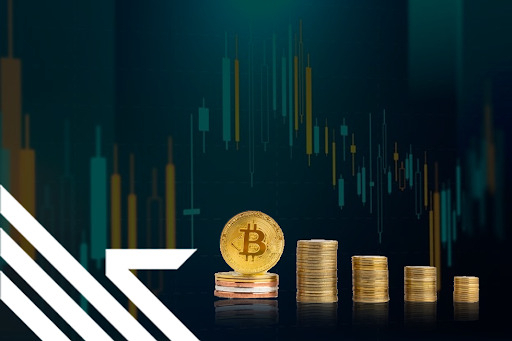
Blockchain technology has ushered us into a digital age that includes the banking sector. A growing number of people are interested in working with digital currency. Most of us did not expect this level of development. The cryptocurrency business, on the other hand, continues to expand at an unprecedented rate. The global pandemic provides the ideal setting for cryptocurrency to shine. As a result, these tokens are extremely important in the crypto economy.
There are about 11,800 coins in circulation right now, with more on the way. The market capitalization of cryptocurrencies has crossed $2 trillion, and it is expected to continue to increase. There are many distinct token models in the realm of digital assets, each with its own process and features. Despite this diversity, practically all token models may be divided into two groups: inflationary and deflationary.
As one might assume, a deflationary token scheme involves the gradual removal of tokens from the market. Tokens can be removed from the market in a number of ways, including token buybacks and token burns by the token creators. The fundamental advantage of these models is that they prevent the market from becoming swamped with extra tokens when more are mined, created, or sold by the founders. While some may claim that reducing the supply may reduce the token's actual availability, cryptocurrencies are divisible up to the 100 millionth decimal place, therefore removing this issue.
The primary problem with deflationary tokens is that regulators will typically regard them as security. This is due to the fact that the deflationary processes used to buy back tokens from the market are often reliant on the company's profitability. If the firm succeeds, more tokens can be purchased from the market, improving the ecosystem's health; if the company performs poorly, they will not have the resources to purchase as many tokens from the market, resulting in an excess supply and, in some cases, an unhealthy environment. These deflationary tokens will almost always be categorized as a security due to the clear link between the company's profitability and the health of the token ecosystem. Fortunately, if the token's designers are cautious and follow all relevant guidelines regarding the token's distribution and sale, the token's designation as security will have no impact on the ecosystem's health.
Among the most notable projects with deflation tokenomics at its core, Hector Finance is the one grabbing most of the attention. Hector Finance is building a financial center on the Fantom Opera Chain and beyond, with a range of use cases that the $HEC token can serve. The $HEC token can be staked for (rebase) rewards. Through buybacks and burns, the protocol tries to deliver an appealing APY while also promoting scarcity. The $TOR stablecoin can only be obtained by exchanging $HEC for $TOR, and it gives highly competitive farming rewards. At a high level, Hector Finance consists of its protocol-managed treasury, protocol-owned liquidity (POL), bond mechanism, and staking rewards that are designed to control supply expansion. The Hector Ecosystem is developing several key subprojects which will bring in more profit. Several of these subprojects have been released already.
Deflation Offers a Sound Economic Structure
Some of you may mix up the concepts of deflation in traditional finance and deflation in cryptocurrencies. In traditional finance, deflation is a bad term, however, it is a positive term in cryptocurrency. A reduction in the value of an asset owing to causes such as over-minting is referred to as deflation in crypto finance. A deflationary cryptocurrency market supply shrinks over time. This means that users or the project's team will take steps to reduce the coin's supply on the blockchain. Burning tokens is a common method of achieving this purpose. It's important to note that cryptocurrencies with a limited supply are deflationary by definition. They reach this status because the supply of the currency decreases as long as investors buy and retain it. Bitcoin, the king coin in the crypto market with the biggest dominance to date, is an amazing illustration.
Many crypto enthusiasts feel that DeFi will be defeated by deflationary tokens. Despite DeFi's ability to assist in the development of web 3.0 in the future, some of us may be wary of this factor. The employment of deflationary token methods by projects like Ethereum, on the other hand, raises the question of why all the fuss. Let's start with how to respond to that inquiry. Platforms use buyback and burn, as well as transaction burning, as burn methods. The repurchase method is self-explanatory, as it comprises the platform purchasing tokens from holders and putting them in an inaccessible address; a platform may use a portion of its income to complete this transaction.
Deflationary tokens benefit both investors and projects in a variety of ways. Deflationary tokens are primarily interested in addressing the issues with traditional finance. Deflationary tokens, contrary to popular assumptions, have a positive impact on the cryptocurrency market. During the recent bull run, deflationary tokens have gained a lot of attention. This feature immediately adds to the interests of investors as they make more money. Another option is for a platform to decide to buy back coins from its users. Short sellers will profit from the entire process leading up to the coin burning. After all, is said and done, the desired result is a gain in value following the burning.








